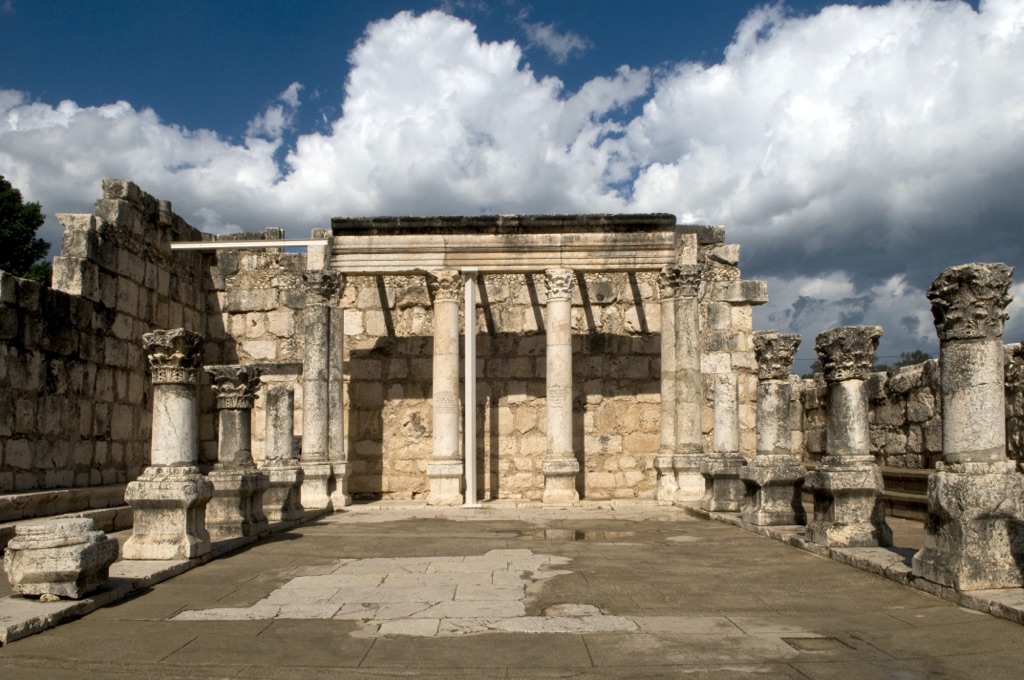Capernaum, located in Israel, is a significant archaeological and historical site. Once a bustling fishing village on the northern shore of the Sea of Galilee, it holds religious importance, especially in Christianity. It is mentioned in the New Testament as a place where Jesus performed miracles and taught in the local synagogue. Today, Capernaum is a treasure trove for historians and archaeologists, offering insights into ancient life and early Christian history.
Get your dose of History via Email
Historical Background of Capernaum Israel
Capernaum, known in Hebrew as Kfar Nahum, was established during the Hellenistic period. It thrived in the Roman and Byzantine eras. The site was discovered in the 19th century by Edward Robinson, an American biblical scholar. He identified the ruins based on the descriptions in ancient texts. The village was built and inhabited by Jews who later witnessed the presence of Jesus and his disciples.
The Romans had a presence in Capernaum, as evidenced by the remains of a Roman road. The village’s ancient synagogue, where Jesus is said to have taught, was constructed in the 4th century on the remains of an earlier synagogue from the 1st century. This earlier synagogue was likely the very place where Jesus preached, making it a site of immense religious significance.
Over time, Capernaum fell into obscurity and was abandoned. It wasn’t until the late 1800s that the site began to be excavated. The Franciscan Custody of the Holy Land has conducted extensive excavations since the 20th century. They have uncovered significant finds, including the synagogue and what is believed to be the house of Saint Peter.
Capernaum also played a role in the First Jewish-Roman War. Josephus, a Jewish historian, mentions the village in his writings. He describes it as a fertile spring, indicating the village’s prosperity during that time. The site’s decline began in the 7th century, following the Persian invasion and later the Arab conquest.
The village was eventually abandoned, and its ruins became a place of pilgrimage. The site’s historical importance is not only due to its biblical connections but also because it provides a window into the daily life of people during the Roman and Byzantine periods in this region.
About Capernaum Israel
Capernaum sits at the northwestern shore of the Sea of Galilee. It features the remains of an ancient synagogue made of white limestone, contrasting with the local black basalt. The synagogue’s architecture includes Corinthian columns, indicating the influence of Roman culture.
The site also includes what is believed to be the house of Saint Peter. This house became a place of Christian worship, and by the 4th century, a church was constructed over it. The octagonal shape of the later church built over the site suggests its function as a place of significant Christian worship.
The layout of Capernaum reveals typical Roman urban design. The streets are arranged in a grid pattern, with houses built alongside. The building materials primarily consisted of basalt, a volcanic stone abundant in the area. This gives the ruins their distinctive dark color.
Archaeological excavations have unearthed various artifacts, including pottery, coins, and fishing tools. These findings suggest that the village’s economy was based on fishing and agriculture. The presence of an ancient olive press indicates the production of olive oil, a valuable commodity at the time.
The site’s preservation allows visitors to walk through the ancient streets, envisioning life during the time of Jesus. The blend of Jewish and Roman architectural elements reflects the cultural diversity of the period.
Theories and Interpretations
Several theories surround Capernaum’s biblical significance. Some scholars debate the exact location of Jesus’ miracles. However, the general consensus is that Capernaum was a central location in his ministry.
The house of Saint Peter is subject to interpretation. Early Christians venerated the site, and the remains suggest it was an insula, a type of communal housing. The transition from a domestic space to a religious one is evident in the architectural changes.
Mysteries also abound regarding the ancient synagogue. The original 1st-century synagogue where Jesus would have preached is beneath the visible 4th-century structure. The reasons for rebuilding the synagogue on the same spot are a topic of scholarly discussion.
Dating of the site has been carried out using various methods. These include typological analysis of pottery and coins, as well as radiocarbon dating of organic materials. These methods have helped establish the timeline of Capernaum’s occupation and development.
Interpretations of the site are often matched to historical records from the New Testament and Josephus. This cross-referencing allows for a more nuanced understanding of Capernaum’s role in ancient Jewish and Christian contexts.
At a glance
Country: Israel
Civilization: Jewish settlement, significant to early Christianity
Age: Established during the Hellenistic period, flourished in the Roman and Byzantine periods (2nd century BC to 7th century AD)
Conclusion and Sources
The information in this article has been obtained from reputable sources, ensuring an accurate representation of Capernaum’s historical and cultural significance.
Sources:

